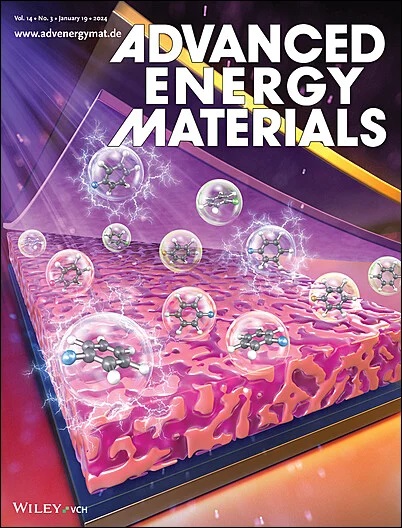Cu‐Driven Active Cu2Se@MXene Heterointerface Reconstruction and Co Electron Reservoir Toward Superior Sodium Storage
IF 24.4
1区 材料科学
Q1 CHEMISTRY, PHYSICAL
引用次数: 0
Abstract
Heterostructure engineering and active component reconstruction are effective strategies for efficient and rapid charge storage in advanced sodium‐ion batteries (SIBs). Herein, sandwich‐type CoSeCu驱动的活性Cu2Se@MXene异质界面重建和Co电子库对钠的优越储存
异质结构工程和主动成分重构是实现先进钠离子电池高效、快速充电的有效策略。本文以夹层型CoSe2@MXene复合材料为模型,通过原位电化学驱动重建新的活性Cu2Se@MXene异质结构。MXene核心为电子和离子传导提供了相互连接的途径,同时也缓冲了体积膨胀以稳定结构。这种重建的Cu2Se@MXene异质界面具有丰富的钠储存活性位点,增强了Na+的吸附和扩散动力学,从而增加了钠的储存容量。此外,放电过程中Co价态的升高使其成为一个电子储层,为Cu2Se转化提供额外的电子供应,加速了钠的储存动力学。当用作sib的阳极时,CoSe2@MXene电极具有高容量(在0.1 A g−1时为694 mAh g−1),优异的倍率性能(在20 A g−1时为425 mAh g−1)和优异的耐久性(在5 A g−1下进行10,000次循环后为437 mAh g−1,每次循环的容量衰减为0.0014%)。通过非原位表征和理论计算,进一步揭示了Cu2Se@MXene阳极的电化学重构和储钠机理。这项工作为sib的高级转换型阳极的设计提供了一种新的方法。
本文章由计算机程序翻译,如有差异,请以英文原文为准。
求助全文
约1分钟内获得全文
求助全文
来源期刊

Advanced Energy Materials
CHEMISTRY, PHYSICAL-ENERGY & FUELS
CiteScore
41.90
自引率
4.00%
发文量
889
审稿时长
1.4 months
期刊介绍:
Established in 2011, Advanced Energy Materials is an international, interdisciplinary, English-language journal that focuses on materials used in energy harvesting, conversion, and storage. It is regarded as a top-quality journal alongside Advanced Materials, Advanced Functional Materials, and Small.
With a 2022 Impact Factor of 27.8, Advanced Energy Materials is considered a prime source for the best energy-related research. The journal covers a wide range of topics in energy-related research, including organic and inorganic photovoltaics, batteries and supercapacitors, fuel cells, hydrogen generation and storage, thermoelectrics, water splitting and photocatalysis, solar fuels and thermosolar power, magnetocalorics, and piezoelectronics.
The readership of Advanced Energy Materials includes materials scientists, chemists, physicists, and engineers in both academia and industry. The journal is indexed in various databases and collections, such as Advanced Technologies & Aerospace Database, FIZ Karlsruhe, INSPEC (IET), Science Citation Index Expanded, Technology Collection, and Web of Science, among others.
 求助内容:
求助内容: 应助结果提醒方式:
应助结果提醒方式:


